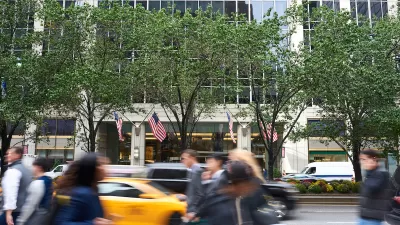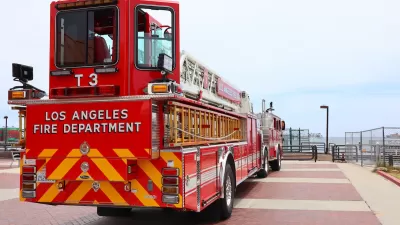Over the past 15 years, more than 76,000 pedestrians have been killed in the U.S. Some say preventing a significant portion of these deaths is as simple as enforcing jaywalking laws. Not so, argues Tom Vanderbilt, author of Traffic.
"Certainly, there are egregious jaywalkers who defy logic and physics in their wayward perambulations. (Many of these are drunk people; as the National Highway Traffic Safety Administration notes, "about 25 percent of fatally injured pedestrians have a BAC greater than .20"). And, conversely, there are also careful jaywalkers, like myself, who frankly find the notion of waiting for a signal when no cars are in sight to be faintly ridiculous and anti-urban.
But the facts simply do not support the idea that jaywalking is the greatest danger pedestrians face, and that drivers should be let off the hook."
Vanderbilt cites a report that finds only 20 percent of fatalities occurred where a pedestrian was crossing outside an easily available crosswalk.
FULL STORY: In Defense of Jaywalking

Maui's Vacation Rental Debate Turns Ugly
Verbal attacks, misinformation campaigns and fistfights plague a high-stakes debate to convert thousands of vacation rentals into long-term housing.

Planetizen Federal Action Tracker
A weekly monitor of how Trump’s orders and actions are impacting planners and planning in America.

In Urban Planning, AI Prompting Could be the New Design Thinking
Creativity has long been key to great urban design. What if we see AI as our new creative partner?

King County Supportive Housing Program Offers Hope for Unhoused Residents
The county is taking a ‘Housing First’ approach that prioritizes getting people into housing, then offering wraparound supportive services.

Researchers Use AI to Get Clearer Picture of US Housing
Analysts are using artificial intelligence to supercharge their research by allowing them to comb through data faster. Though these AI tools can be error prone, they save time and housing researchers are optimistic about the future.

Making Shared Micromobility More Inclusive
Cities and shared mobility system operators can do more to include people with disabilities in planning and operations, per a new report.
Urban Design for Planners 1: Software Tools
This six-course series explores essential urban design concepts using open source software and equips planners with the tools they need to participate fully in the urban design process.
Planning for Universal Design
Learn the tools for implementing Universal Design in planning regulations.
planning NEXT
Appalachian Highlands Housing Partners
Mpact (founded as Rail~Volution)
City of Camden Redevelopment Agency
City of Astoria
City of Portland
City of Laramie





























